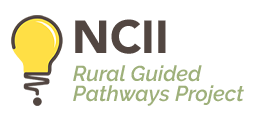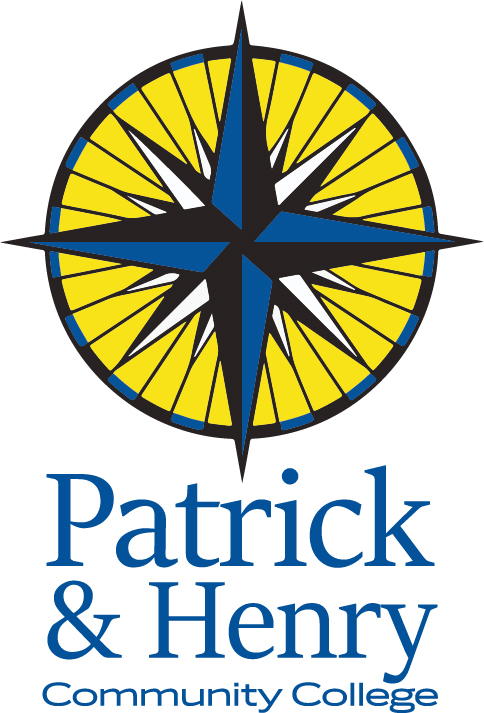Leap and the Net Will Appear
Making college-wide improvements requires courage. The Rural Guided Pathways Institutes helped Patrick & Henry Community College (P&HCC) become more comfortable with taking risks and braving new territory.
“At an Institute, I heard someone say, ‘Leap and the net will appear,’ and that is one of my favorite lines,” says Christopher Wikstrom, vice president of academic & student success services. “Hearing about different colleges’ success with pathways strategies gave us a nudge that said, ‘Okay, you’re doing the right thing. Go and take that chance. Take that risk and jump.’”
New Ideas From Every Institute
“We come back from every Institute with something new to do, such as Caring Campus and program realignment,” adds Meghan Eggleston, dean of student success. “Often there are ideas we’ve been considering, and when we go to an Institute we get the information we need to move forward. We show up and find our support. It’s been really big for us.”
The P&HCC team has also built powerful connections with other colleges that are part of the project. For example, the P&HCC team visited Kilgore College to see its approach to eight-week classes, and they are welcoming a team from Marion Technical College to their campus.
“At the last Institute, we immediately started talking with two other colleges,” Wikstrom recalls. “And I thought, ‘Oh, my gosh, these are friends.’”
Caring Campus
“The first Institute started after we had spent two years telling everybody to stay in their offices and to not gather in large groups because of COVID,” Eggleston says. “And then that first Institute closed with Brad Phillips talking about Caring Campus.” Phillips is president and CEO of the Institute for Evidence-Based Change (IEBC). Caring Campus, developed by IEBC, focuses on creating a culture of caring that helps students be more connected to their colleges.
“Everyone on our campus had been keeping to themselves, and it was time to change that,” Eggleston continues. “Caring Campus helped us think about how to be more intentional about our interactions with each other and with our students.”
Before the Institute, neither Eggleston nor Wikstrom had heard of Caring Campus. “I was emailing with Chris [Wikstrom] and our president during the session and sending screenshots from my phone,” Eggleston recalls. “Brad was the final speaker at that Institute, and he closed it so well. Our team left with so much energy.”
Caring Campus also created leadership opportunities at P&HCC. “We’ve had some staff really step up and lead this change,” Eggleston says. “They are putting everything into it, and they are really leading each other through it. So it has helped us create connections to both our students and each other.”
Restructuring, Culture Change, and Communication
Eggleston sometimes marvels at how much work P&HCC has done since beginning the Rural Guided Pathways Project, including realigning some programs and dissolving others because they did not lead to living-wage jobs. The college restructured roles and eliminated some positions. As part of this work, and in concert with launching Caring Campus, the college also relocated some faculty offices and service locations to improve support for students.
“We ended up moving more than 40 offices and some services,” Wikstrom says. “We used it as an opportunity to re-engage faculty and staff and talk about the cultural changes we were making. Those changes fit with conversations about how we were coming out of the pandemic.”
It was a multi-tiered process that started with the position elimination but also included service and position realignment. The college moved faculty closer to classrooms, supervisors closer to those they supervised, and services to places that better fit with students’ needs.
“We communicated to our employee base with every step, and we got feedback throughout this process so everyone was involved in a conversation about what the new Patrick & Henry Community College was going to look like,” Wikstrom says.
“It’s very clear that services are now in the same building,” Eggleston adds. “And before, some faculty offices were in nooks and crannies. We even had a few offices stuffed into the library, where the whole concept is that you don’t talk.”
Now many faculty offices have been moved to the hallways where classes are. In the past, the offices in those classroom hallways were filled by personnel who were less likely to interact with students, so the doors typically were closed.
“Now the faculty are right there with the students,” Eggleston says. “The students see them and don’t have to go look for them if they have questions.”
This move also helped build post-COVID faculty camaraderie. “They’re in each other’s offices. They’re talking, and they’re laughing. And I’ve heard feedback that they have really come together,” Eggleston says. “That building is just a lot more lively than it was in the past.”
Support That Leads to Improvements
P&HCC’s coach, Ed Bowling, helped the college focus on the most critical issues. “He asks us, ‘What is the problem that you’re trying to solve?’” Wikstrom says. “And he has helped us recenter our work around that question. It echoes through all of the changes we have been making.” Bowling is a senior fellow at the National Center for Inquiry & Improvement (NCII).
“The Rural Guided Pathways Project gave us a backdrop of networked colleges we could lean on and talk with,” Wikstrom adds. “It’s been such a nice catalyst for P&HCC to change over the past couple of years, and it’s significantly contributed to where we are today.”

